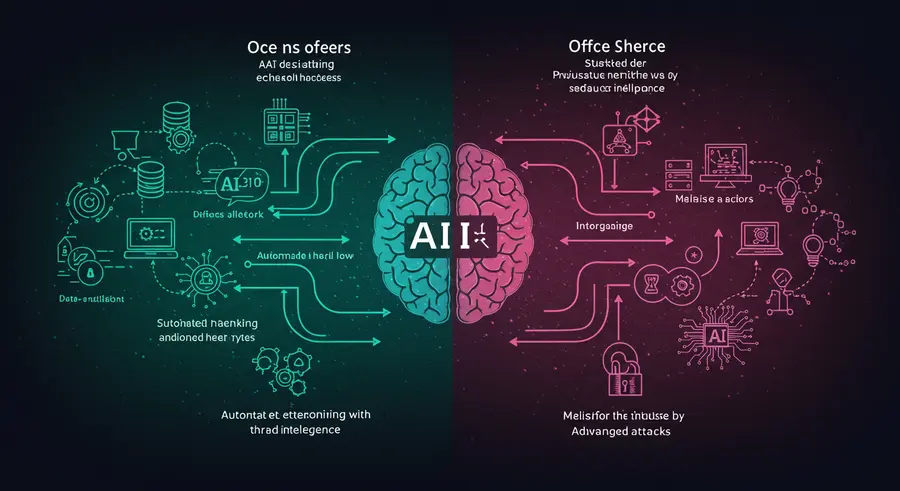Appearance
The Evolving Landscape of AI in Cybersecurity: From Malware Analysis to Ethical Hacking
The world of cybersecurity is in constant flux, and at the forefront of this evolution is Artificial Intelligence (AI). AI is no longer just a buzzword; it's a powerful tool reshaping how we approach digital defense and, ironically, how attackers craft their next moves. As ethical hackers, it is crucial to understand this dual nature of AI to fortify our systems effectively.
AI's integration into cybersecurity practices empowers us to detect vulnerabilities faster, identify sophisticated threats, and automate repetitive tasks, making security assessments more efficient than ever. However, it also presents new challenges as malicious actors leverage AI for more evasive and advanced attacks. It's a continuous game of cat and mouse, where AI is both the hunter and the shield.
How AI Enhances Ethical Hacking
AI-driven tools are revolutionizing traditional ethical hacking methods, which were often time-consuming and struggled to keep pace with the increasing sophistication of cyber threats. AI helps by automating tasks, improving accuracy, and enabling predictive analysis.
1. Automated Vulnerability Scanning
AI-powered tools can autonomously scan networks, applications, and systems for weaknesses. These tools can process vast amounts of data, pinpoint potential weak spots, and even suggest remediation steps. This automation frees up ethical hackers to focus on more complex, critical thinking tasks during penetration testing.
2. Advanced Threat Detection
AI systems are constantly learning from past attacks and adapting to new threat patterns. This enables them to identify sophisticated and previously unseen threats, such as zero-day exploits or advanced persistent threats (APTs). By analyzing data in real-time, AI can flag unusual behaviors that might indicate a budding security incident.
3. Simulating Attacks with AI
One of the most powerful applications of AI in ethical hacking is its ability to simulate cyber attacks. This allows us to understand how threats might evolve and test our defenses against various scenarios. For instance, AI can simulate advanced social engineering attacks like sophisticated phishing campaigns, helping organizations prepare for real-world scenarios and train their employees.
Here's a simple conceptual Python script snippet showing how an AI might assist in identifying suspicious email patterns (simplified for illustration):
python
import re
def analyze_email_with_ai(email_content):
suspicious_keywords = ["urgent action", "verify account", "unusual activity", "click here"]
malicious_patterns = {
"bad_link": r"http[s]?://[a-zA-Z0-9\-\.]+\.bad-domain\.xyz",
"ip_in_link": r"http[s]?://\d{1,3}\.\d{1,3}\.\d{1,3}\.\d{1,3}"
}
score = 0
findings = []
# Keyword analysis
for keyword in suspicious_keywords:
if keyword in email_content.lower():
score += 5
findings.append(f"Suspicious keyword found: '{keyword}'")
# Pattern matching for malicious links
for pattern_name, pattern_regex in malicious_patterns.items():
if re.search(pattern_regex, email_content):
score += 10
findings.append(f"Malicious link pattern found: {pattern_name}")
if score > 10:
return {"status": "HIGH_RISK", "score": score, "findings": findings}
elif score > 0:
return {"status": "MEDIUM_RISK", "score": score, "findings": findings}
else:
return {"status": "LOW_RISK", "score": score, "findings": findings}
# Example Usage
email_example_1 = "Dear valued customer, click here to verify your account immediately: http://login.bad-domain.xyz/verify"
email_example_2 = "Hello, your order has shipped. Track it here: https://track.goodcompany.com/order123"
print(analyze_email_with_ai(email_example_1))
print(analyze_email_with_ai(email_example_2))4. Predictive Analytics for Risk Management
By analyzing historical data, AI and machine learning can predict future security risks. This means identifying recurring patterns in past breaches or attempted attacks to forecast which areas are most likely to be targeted. This capability allows security teams to prioritize their testing efforts, addressing vulnerabilities proactively before they can be exploited.
5. Enhancing Incident Response
AI-based systems can significantly improve incident response plans. They analyze attack vectors in real-time, offering insights into how an attack might unfold and providing immediate recommendations for mitigation. This enables quicker and more accurate responses during a cyber crisis, minimizing potential damage.
The Dual Nature of AI in Cybersecurity
It's important to remember that as much as AI empowers defenders, it also equips attackers. Malicious actors are increasingly using AI to create more sophisticated and evasive malware, automate attack campaigns, and bypass traditional security measures. This is why our understanding and deployment of AI in defense must always evolve.
Below is a visual representation of how AI acts as a double-edged sword in the cybersecurity realm:

Conclusion
The integration of AI into ethical hacking and malware analysis is not just a trend; it's a fundamental shift. From automating vulnerability scans to enabling predictive risk management and enhancing incident response, AI makes our defensive strategies more efficient and effective.
However, we must remain vigilant. As AI continues to evolve, so too will the threats it can help create. The synergy between human expertise and AI-powered tools is our best bet in this ongoing battle against cybercrime. Always assume breach, patch or perish, and remember: knowledge is the best defense.